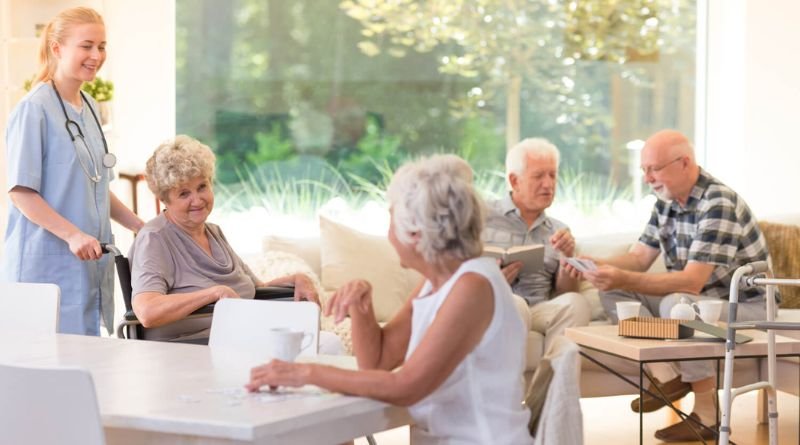Building Connections: How to Foster a Lively Community for Seniors

How to Find the Perfect Senior Living Community for Your Needs
Benefits of a Senior Community
Living in a senior community can provide numerous benefits, including social interaction, access to healthcare, and a sense of belonging. For many older adults, the transition to a senior community signifies a new chapter filled with opportunities for personal growth and companionship. More insights on how these communities foster well-being can be found here. A feeling of togetherness can alleviate the loneliness and depression that often affect older people. By engaging in social activities and forming connections, seniors usually experience improved mental health and enhanced quality of life. This nurturing and secure place also brings peace of mind to the families, ensuring their loved ones are well cared for. Moreover, community participation encourages seniors to stay active and engaged, promoting mental and physical wellness.
Critical Elements of an Engaging Senior Community
Creating an engaging senior community involves focusing on key elements such as social spaces, diverse activities, and accessible healthcare services. Ensuring these elements are integrated thoughtfully can significantly enhance the quality of life for residents. Accessibility, safety, and comfort are paramount; attention to these details can make a significant difference. Social spaces like standard rooms and dining halls encourage interaction and build community bonds.
Additionally, providing a range of services from healthcare to entertainment caters to the diverse needs and preferences of the residents. Staff training on empathy and elder care is also crucial as it ensures seniors receive the proper care and attention. A well-planned environment that encourages independence while providing necessary support can make all the difference.
Activities to Promote Involvement and Well-being
Offering a variety of activities is crucial for promoting involvement and well-being among seniors. These can range from physical fitness classes to arts and crafts sessions, catering to diverse interests and abilities. For instance, regular exercise classes can help improve physical health, while hobby groups allow residents to pursue their passions and interests. Aquatic exercises, yoga sessions, and dance classes are popular physical activities that keep residents fit and active while being enjoyable.
Other popular activities include book clubs, gardening, and musical gatherings. Such activities provide enjoyment, stimulate mental engagement, and foster social bonds among residents. Organizing events and celebrations around holidays and cultural festivities can also enhance the community’s vibrancy. Cooking classes, technology tutorials, and lifelong learning programs can stimulate the mind and provide a sense of accomplishment.
Incorporating Technology
Implementing technology can significantly enhance the quality of life in senior living facilities. Devices such as tablets and smart home systems can facilitate communication with family members, improve safety, and provide entertainment and educational opportunities. These technologies offer seniors easy access to a world of information and social connections at their fingertips.
For example, video-calling apps enable residents to maintain close relationships with loved ones, even if they live far away. Smart home devices can also assist with everyday tasks, making living more convenient and secure. The implementation of wearable devices can monitor health parameters, ensuring timely medical intervention. Voice-activated assistants can help with reminders and information searches, making daily life smoother and more enjoyable.
Moreover, technological platforms can host virtual classes and telehealth services, expanding seniors’ range of activities and care. These innovations transform senior living, making it more connected, safe, and enriching.
Designing a Welcoming Environment
The physical design of a senior community should foster comfort and accessibility. Features like wide doorways, handrails, and well-lit pathways are essential. Incorporating natural elements and communal spaces can also create a more inviting atmosphere, encouraging residents to socialize outdoors. Thoughtfully designed living spaces, such as cozy lounges and comfortable dining areas, contribute to a homely feel. Landscaping that includes gardens and walking paths can provide serene spots for relaxation and recreation. Together, these elements help create a space that feels secure and welcoming. Using calming color schemes, natural light, and ergonomic furniture adds to the sense of comfort. Spaces designed for easy mobility, with clear signage and non-slip flooring, ensure safety. These design elements foster independence and create a nurturing environment for seniors where they can thrive.
Access to Healthcare and Wellness Programs
Access to comprehensive healthcare and wellness programs is a cornerstone of a thriving senior community. Regular health checks, fitness programs, and mental health support ensure that residents can maintain their health and well-being over the long term. According to the National Institutes of Health, well-structured wellness programs can significantly enhance seniors’ overall quality of life. These programs can include physical therapy to nutritional counseling, catering to residents’ diverse health needs. Providing on-site healthcare services ensures that medical help is readily available, fostering a sense of security among residents and their families.
Additionally, group fitness sessions and wellness seminars can educate residents about maintaining their health proactively. Mental health support, including counseling and therapy sessions, is also crucial as it addresses the emotional and psychological well-being of the seniors. Taking care of every aspect of health-physical, mental, and emotional-supports a holistic and caring environment.
Many senior communities worldwide have implemented these principles with great success. For example, communities that foster social interaction and provide diverse activities report higher resident satisfaction and well-being levels. Communities that integrate healthcare, social activities, and technology typically see significant improvements in residents’ mental and physical health. Real-life examples showcase how thoughtfully designed environments and programs can transform the senior living experience, making it enjoyable and fulfilling. For instance, residents in such communities often report a greater sense of purpose and happiness, illustrating the effectiveness of these holistic approaches.
Future Trends in Senior Living
The future of senior living looks promising, with trends pointing towards more personalized and tech-integrated solutions. Communities are increasingly incorporating emerging technologies, like AI and VR, to enhance the quality of life for their residents. As AARP pointed out, advancements in senior living are constantly changing to cater to a growing elderly population.
We expect to see more sustainable, eco-friendly community designs prioritizing environmental health and resident well-being. Personalization will also play a key role, with tailored services and living spaces designed to meet individual preferences and needs. The integration of cutting-edge technology will continue revolutionizing senior living, making it more adaptable, interactive, and connected. Furthermore, community layouts will likely become more inclusive, incorporating multicultural elements to cater to diverse resident populations. As societal understanding of aging evolves, senior communities will become progressive spaces celebrating life, learning, and continuous growth.



